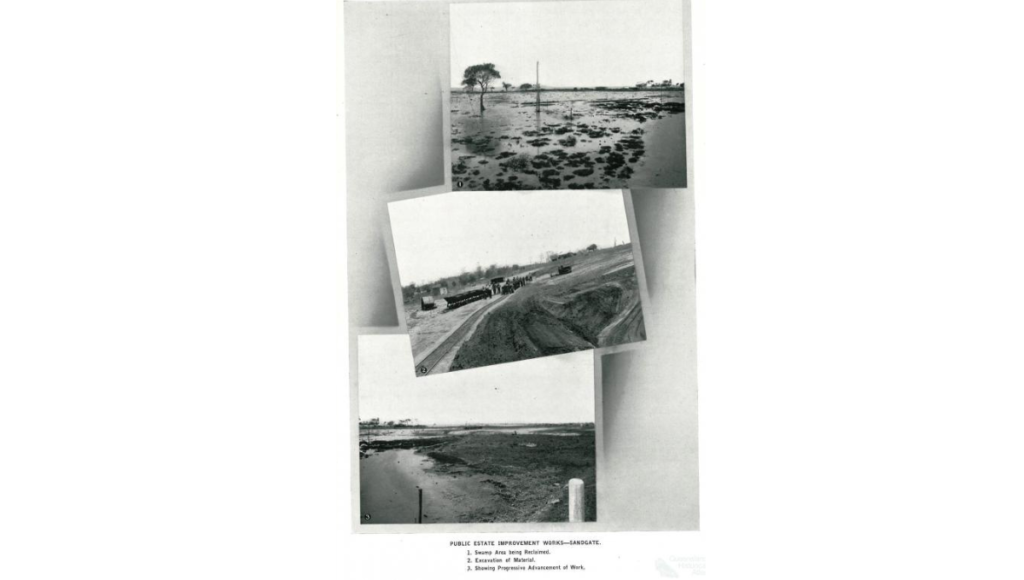Probably very few in Sandgate or nearby suburbs gave a thought to – or even knew about – the Wall Street stock market crash of October 1929. It was not long, though, before the effects of the economic contagion that was the Great Depression came to be felt in Australia.
Queensland, being less industrialised than other states, was marginally less affected but that is not to say that conditions for many people were not desperate.
With very little industry in Sandgate and neighbouring seaside and rural areas, most people were self-employed or reliant on small businesses for jobs. In addition, with fewer people able to afford holidays, the tourist trade dried up and those who had earned a living catering to holidaymakers lost their livelihoods. As the economy slowed, businesses failed, jobs became scarce and soon, many were out of work.
With the passing of the Unemployed Workers Insurance Act in 1922, Queensland, unlike other states, at least had a scheme to support the unemployed, and the government, in conjunction with the Brisbane City Council, further responded to the crisis by instituting relief works to provide jobless men with some remuneration (women, generally dependent on a male breadwinner, were not eligible).
Remembering Sandgate’s Struggles and Triumphs

In April 1930, government-approved works for Sandgate and environs included road building, repairs to sea walls, drainage improvements and land reclamation in Sandgate’s ti-tree and mangrove swamps.
Relief was also provided by churches and welfare societies. In December 1931, the Brisbane Courier reported that the Sandgate Mutual Aid Society had held “an attractive pageant” in Moora Park “for the purpose of assisting the unemployed single men and women of Sandgate”. Events included a fancy dress procession, boxing and wrestling competitions and community singing.
Distressing stories abounded, such as that recounted by the Daily Standard, of the man who walked from Sandgate to the city and back every day in search of work. Many people, unable to afford rent, were made homeless and a shanty town sprang up on the banks of Cabbage Tree Creek where people – families included – lived in tents and shacks.
The economy did not begin to recover until the late 1930s and those who lived through the Depression never forgot it – a lasting frugality was one of its legacies for many families whose parents had endured the hardships of those years.
As we witness again today a rise in economic distress, with homeless campers once more finding some refuge in local parks, we must hope that such a catastrophic downturn will never again feature in our future.
[With thanks to the Sandgate Historical Museum (Opening hours: Sunday and Wednesday, 10am to 3pm). Photograph: John Oxley Library, State Library of Qld, Neg No 1868 71]
Read more stories from the Sandgate Guide print magazine here:
- Bramble Buzz: Updates from the Community
- What’s Hot Around Town
- Mad Mob Social Group Hosts Barefoot Bowls Fundraiser
- Celebrate the Bayside at Sunset Soiree
- A Festive Photo Shoot to Bark Up the Christmas Tree
- Charity Founder Honoured
- Join Scenic Kangaroo Walk with Expert Insights
- Your Guide to the State Election
- Opinion Piece: Mental Health Week
- Dublin Rose Crowned People’s Choice at Music Awards Night
- Let’s Get Spooky
- Move Over Central Perk – Deagon’s Newest Café Offers Its Own Friendly Vibes
- Tee Off with Ghostly Glee at Spooky Putt Putt
